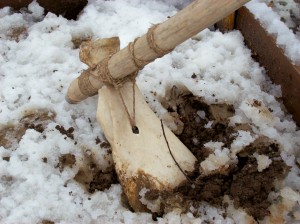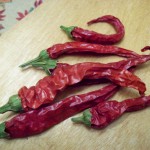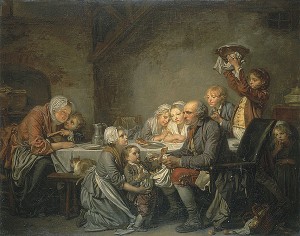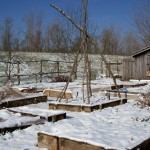36 degrees F
Sunny, Winds 5-10 miles SW
“Good and happy year!”-a greeting heard throughout the French communities of the Illinois country in the New Year. Familles visited each other’s homes during the first two weeks of January, giving entrennes, small presents to children, usually of fruits, nuts, cakes or small articles of clothing. Visitors were offered refreshments such as coffee and wine and a selection of desserts.
As meals were prepared for holiday festivities, their menus reflected the successes and failures of the garden season. The women would have preserved and stored many of the fruits and vegetables grown in the past year, presenting them in feasts offered for the holidays and for balls in the coming weeks.
Meals offered would reflect the victories of the jardin: cabbage, carrot, melon, onion, pepper, squash, and turnips. If they had the same meager harvest of bean, beet, leek, and peas that we experienced in this past summer and fall harvests, those vegetables would have been absent in the holiday menu, and most likely meat would be scarce as well. The heat and drought of the high summer months reduced crops and stock available to sustain l’habitants as the winter seasons progressed. While the study of the garden plans for the new season continued on the cold and snowy winter nights, hearts, then as now, offered fervent prayers and petitions for a gentler and kinder growing season in the New Year.
As winter continued its progress, la Fete des Rois would arrive on the twelfth day of Christmas. On the eve of this holiday, the first ball was held-Bal des Rois.
Young girls under the supervision of the matrons prepared the foods for the supper and dance. Making all kinds of savory dishes, the ever-present chicken bouillon, brandied peaches, sweetened nuts, and the regional favorite, les croquinoles-a type of cruller or beignet. One must believe that other cakes and pies such as a tourtière would also be served. In some of the communities, food for feasts was provided from items collected as the revelers travelled door to door in the running of la Guignolée on New Year’s Eve. Refreshments offered during the festivities would have been homemade cordials, wine and a type of ratafia (ratafiaz) for the gentlemen. Upon the closure of the ball, a special cake with four beans kneaded into the dough was served to the young ladies in attendance. The young ladies who received these beans were declared queens and each selected their “king.” After the ladies presented bouquets to their selections, the date was then set for the next ball in the carnival season.
Amis du jardin, celebrate the remainder of this winter season, for soon Lent will be with us and our work in the jardin will begin in earnest.
Information in this post was gathered from regional sources, including the Ida M. Schaaf Collection, Missouri History Museum Archives, St.Louis and Judge Wilson Primm, “New Year’s Day in the Olden Times of St. Louis.”
Regional and French recipes for the holiday season mentioned is this post are located on the Recettes page of this blog. Our annual garden weekend at Fort de Chartres will be held Saturday and Sunday, February 23 and 24. Stop by and visit with l’habitants as work is done to prepare the jardin potager for the upcoming growing season.




Leave a Reply